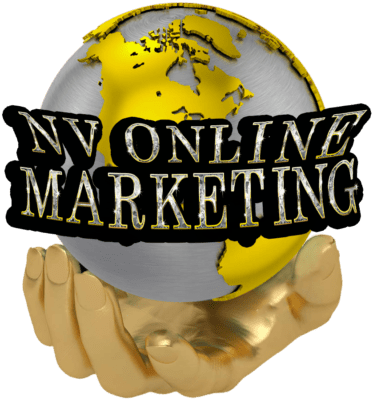Introduction – B2B buyers and search engines
Like most of us, B2B customers prefer researching products and services online. A recent survey by Clutch reported that the overwhelming majority of respondents (nearly 90%) discovered new B2B content from search engines.
If you’re targeting B2B buyers, then your website needs show up on in the search results. For many businesses, this means advertising with Google.
But advertising on Google in the B2B space is challenging. The high level of competition for a limited portfolio of keywords drives up cost per clicks (CPCs). It can also be difficult to attribute the true impact of paid search to your bottom line because B2B products and services tend to have a long sales cycle.
This combination of challenges can spell lots of trouble for B2B marketers in the form of high CPCs and poor ROI. The good news is that there are some very effective strategies you can implement to avoid waste and generate high-quality leads from paid search.
We referenced a Forrester study that “unfunnelized” the B2B buying journey, making it look more like a pretzel than anything linear. Here’s that image again:
Image Source: Forrester
We’re bringing the B2B buyers’ journey up again because it can play a key role in helping you identify the right keywords to target in your paid search campaigns.
As you can see from the Forrester image, the buyer’s’ journey starts out with search and discovery. The web – as a touchpoint – appears throughout the funnel, culminating with your company website at the beginning and again at the very end of the buying cycle.
When targeting keywords in your paid ads, you’ll want to reach your buyers at the start and at the end of the funnel. Choosing the right keywords (and filtering out the wrong ones) will be key in achieving this.
Keyword selection for B2B Buyers
We realize that many B2B marketers are already running Google Ads, so you already have a wealth of keyword information and research.
There are also many companies that are just starting out with paid search. In this case, you are probably may creating a keyword list for the very first time.
Keep in mind that a lot of this advice is relevant regardless of how experienced you are with paid search (and particularly if you’re frustrated with the return from your paid search campaigns).
Building a B2B keyword list from scratch.
If you’re building a keyword list from scratch, start by creating a customer persona that identifies who your buyer is and what problem they’re trying to solve. You may even have some of this information on hand already. Your sales force can be a great resource for informing this part of the discovery process.
Once you have your preliminary list, there are wealth of online tools that can help you research keywords and expand the list. Here are a few we love:
Google Keyword Planner. Google’s planner provides keyword search volume, competitive information, and suggestions to Google Ads advertisers. You can gain access to the tool by creating a Google Ads account (even if you don’t launch any ads). Some of the data is quite granular and includes estimated CPCs and level of competition for each keyword.
Sample of results from Google’s keyword planner for the term “industrial cleaning services”
- Third party tools. A few of our favorites include SEMRush, Wordstream, and this tool which provides some limited free data for multiple websites and platforms including Google, YouTube, Amazon, and Instagram (among others). Most of these tools get their keyword estimates from Google, but some have aggregated their own internal data to help inform the results.
Sample of Google results from Keyword Tool – a third-party keyword tool
Refining your existing B2B keyword list
Once you’ve created your keyword list and have been running your ads for a while, or if you’re one of the thousands of marketers that are already running a paid search campaign, there are a few things you can do to refine your list and stop the flow of money going to unqualified clicks.
Use negative keywords. You can add negative keywords to your Google account to prevent your ads from showing for specific keywords or phrases. Negative keywords vary widely by industry and product. For example, if you sell business insurance, you may add some other insurance products as negatives (e.g., life, health, car, boat, etc.)
There are some common negative terms that can help B2B marketers weed out unqualified clicks right from the moment of launch. These includes terms that job seekers, investors, and information seekers (as opposed to buyers) may search for. Examples are: jobs, employment, recruiting, resumes, salary, definition, example, diagram, association, research (and many, many more).
You may also want to add your competitors to your negative keyword list, though some companies prefer to bid on competitor brands to try and capture a similar audience (caution: bidding on competitors’ brand terms can be expensive, so track their performance closely).
Google provides a report called the Search Term Report which can help you further weed out unqualified keywords. To access this report, do the following:
- Log in to your Google Ads account
- From the “Overview” page click on “Keywords” in the left navigation
- Click on “Search Terms” at the top of the screen
Image Source: Google Ads
The search term report displays a list of the keywords that triggered your ads even if you’re not directly bidding on them. In this report, keywords you’re bidding on are flagged with a green check mark and the term “added.”
It is a best practice to go through your search term report once a week, limiting the data to the previous week’s date range.
In the above report, the advertiser may want to add the term “coach” as a negative. Alternatively, they may want to actively bid on this term if they have a program aimed at training financial coaches.
If you spend one to two hours per week reviewing your search term report, adding negative terms and adding new long-tail positive terms, you’ll definitely reduce waste and get more qualified clicks.
The importance of landing pages for B2B lead generation
We spent so much time on keyword selection and refinement because it’s the best way to get qualified traffic to your website and qualified traffic = qualified leads.
It’s all about the leads!
Once a user clicks through to your website, the next Ideal scenario is that they will reach out to you in some way. In B2B-speak, that typically means filling out an online form or calling to speak with a sales representative. Sometimes it can even mean a direct sale from the website.
To this end, it’s beneficial to create a specialized landing page that is relevant to the user’s search query and includes a single call-to-action accompanied by an incentive. If you’re advertising more than one product or service, you should create a landing page custom to each one of them.
Make sure that your landing page Isn’t cluttered up with too many links, has a link to your privacy policy, and includes a very clear call to action.
Udemy’s landing page for the term “financial training course” is a good example of a highly focused landing page. It contains relevant keywords in the heading and description at the top of the page, a video preview of the course, up front pricing information and a very clear call to action beside a list of the product benefits. This is a page made to convert.
Establishing goals and setting up tracking
All B2B paid search campaigns should have at least one clear goal associated with them. Tracking goals will help you optimize your paid search campaign and assign value to your paid ads.
The goal should be the focal point of your landing page, but you can also track secondary goals based on the various actions you want users to take on your website. These can include (but are not limited to):
- Sales
- Lead forms (contact us, free demo requests, etc.)
- Phone calls
- Webinar signups
- Email newsletter signups
- Video views
- Whitepaper downloads
Most goals can be easily tracked in Google Analytics. Advertisers can also create goals directly in Google Ads and generate a tag which can be added to your website code or implemented with Google Tag manager.
There are many third-party tools that exist to help you track phone leads and provide the ability to listen to every call so you can assess lead quality. One of our favorites is Call Tracking Metrics, a tool that you can integrate with Google Analytics so that phone calls are tracked as goals.
Some final thoughts on targeting
The key to overcoming the challenges in generating leads from B2B search campaigns, is making sure that every visitor counts.
You may be spending as much as $15 per click or more, so it’s important to minimize unqualified clicks as much as possible. Here are a few settings you can implement (or test) to achieve minimal waste.
- Geotargeting – Whether you’re targeting a global audience or a local one, every campaign can benefit from geotargeting. Remove poorly performing locations from your campaign and increase bids on locations that have performed well historically. You can also add geographic qualifiers to your keywords to get better visibility for your preferred locations (e.g., industrial cleaner in Stamford, CT).
- Ad scheduling – Ad scheduling enables advertisers to control exactly when their ads will appear. You can limit ads to just weekdays between 9 and 5 (for example), or make sure your ads don’t run at all on certain days or just go offline from 3 a.m. to 5 a.m.
- Use smart bidding – Google’s smart bidding feature uses machine learning to automatically optimize your campaign for conversions (or conversion value). You need to have conversion tracking enabled to use smart bidding. Advertisers set a target CPA or return on ad spend, and Google’s massive AI brain takes it from there, adjusting your bids and ad delivery so that your ads appear in front of the most ideal users during the most ideal time of day and in the most ideal locations.
ConclusionUsing paid search to get B2B leads Is challenging but not impossible. It does require that you pay attention to your campaigns after launch and that you implement some of the more advanced targeting and optimization features that Google offers its advertisers.A successful B2B paid search campaign is one that has clearly established goals and a way to track these goals.Remember, too, that paid search is just one component of a comprehensive digital marketing strategy. For your search campaigns to be as effective as possible, your company’s marketing strategy needs to be integrated. That means aligning brand messaging, sales, content, and everything in between to achieve a common goal.



Comments are closed.